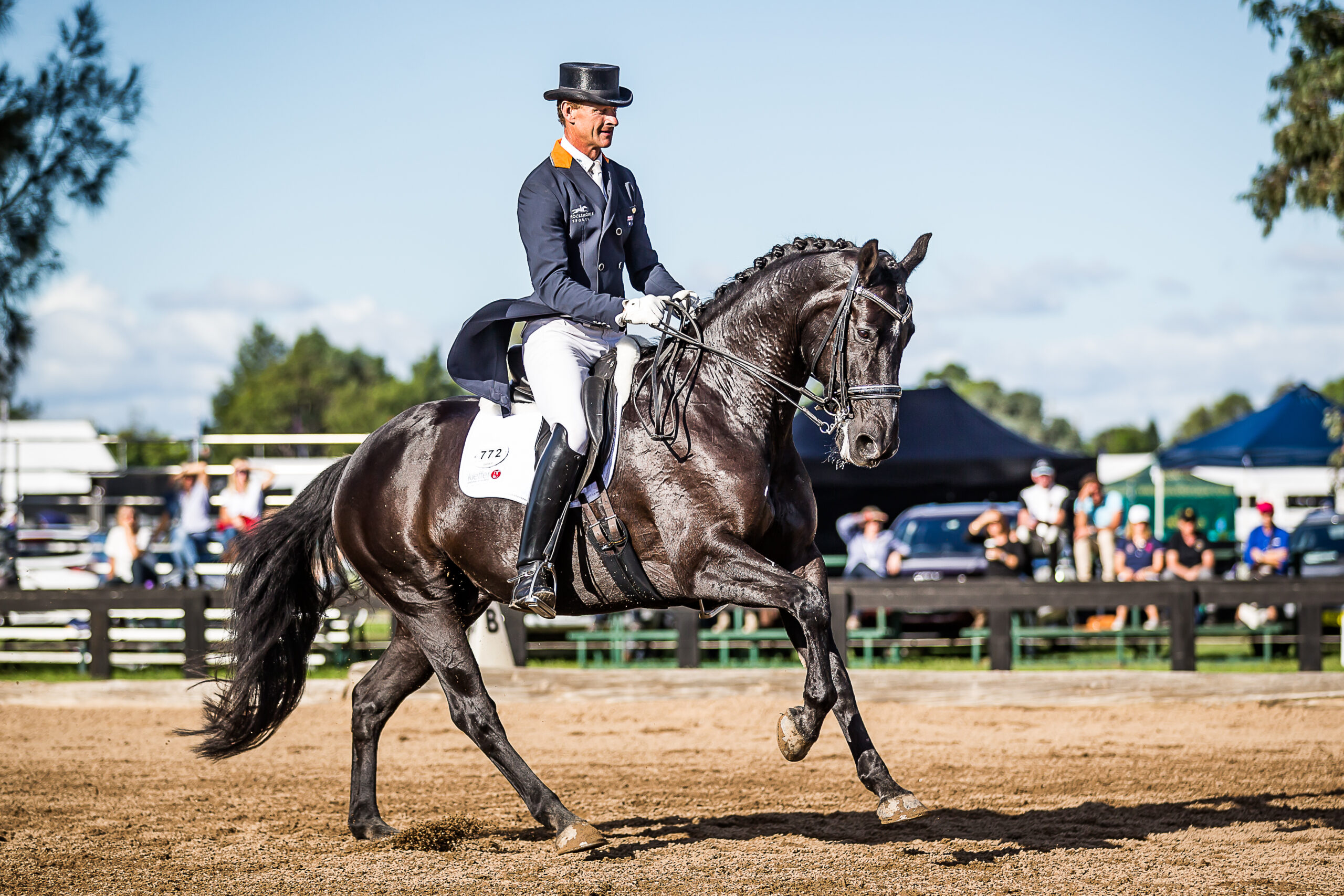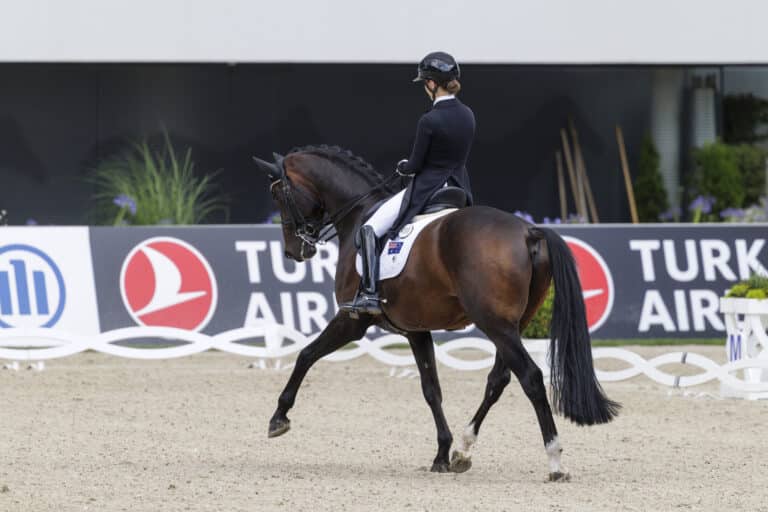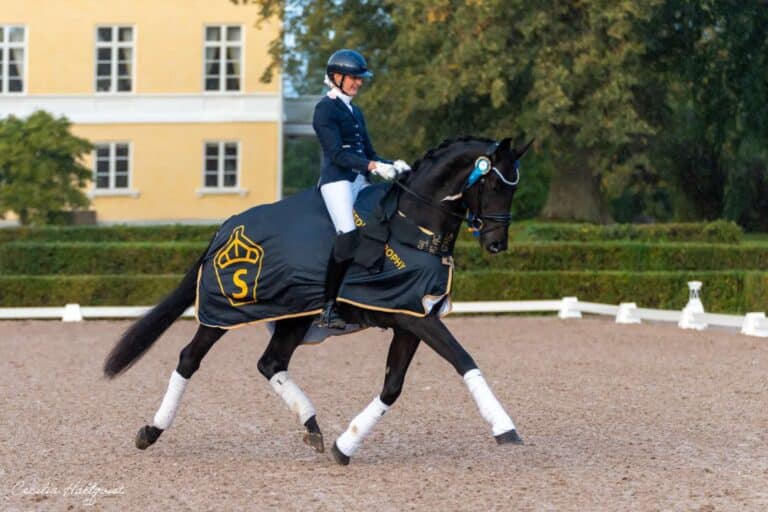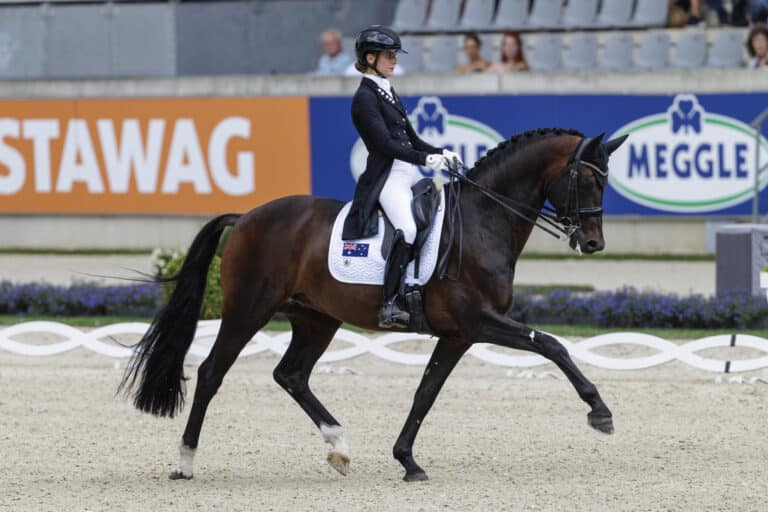I think I speak for most dressage riders when I say that I am guilty of neglecting to spend enough time on the, shall I say, less fun parts of riding dressage. Creating expression in trot or training flying changes is a far more attractive proposition than practising halts and straight lines.
However, with this attitude, we’re missing a trick! The quality of your first centreline sets the tone for the whole test. It creates the first impression for the judge, who will notice how you and your horse present yourselves and how you plan to show your work on the day. It allows the judges to set the “baseline” standard for you in their minds.
What makes a perfect centreline? Well, of course there really is no “perfect” in dressage, the best we can aim for is “excellent”, and an “excellent” centreline would contain these ingredients:
- Straightness
- Good quality pace (trot or canter)
- Balanced and clear transitions in and out of halt
- A square, immobile, attentive halt for at least 3 seconds
It’s worth pointing out that these guidelines are in the dressage tests themselves! All the tests are full of directives for us riders to follow; the clues for how to earn big marks are right there in front of us. I print out all the tests and have them pinned up on a board in the arena so I can refer to them at any time during my ride.
So, how do we achieve these ingredients that together make an excellent centreline? Let’s deal with each one by one.
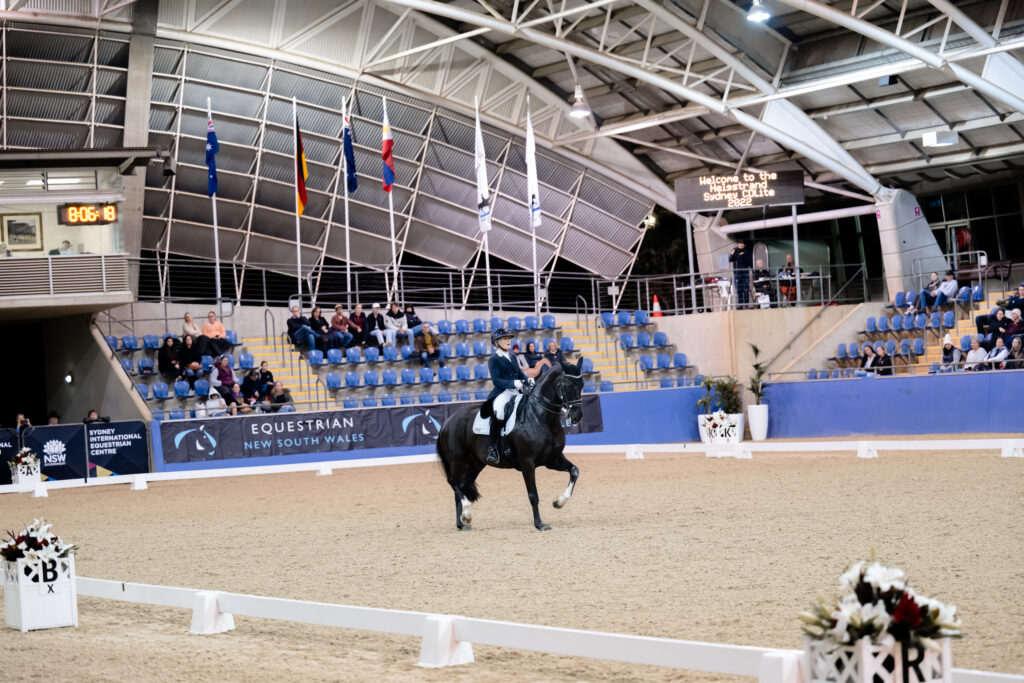
Straightness
The vital step in achieving a straight entry is to have your horse straight as you enter at A, rather than riding a wobbly or curved line as you enter.
Rather than riding small circles at the end of the arena at A, I prefer to ride around the whole arena then take a nice gentle turn into the arena after the bell rings. When it’s time to enter, look up and pick your line.
Once you’re safely in the arena and heading up the centreline, keep your eyes up towards the C judge and think about riding in a positive and determined way through C and beyond.
If your entry is in canter, you will need to ride in shoulder-fore to create the straightness. Keep the horse’s neck straight, as flexion and bend on the centreline can look out of place. This will need to be trained at home and ideally you’ll get some feedback on the straightness either from mirrors, eyes on the ground, or video.
Good quality pace (trot or canter)
A bold entry always scores highly and I find the first centreline is no time to hold back. Enter like you mean business! In fact, riding slightly increasingly forward on the centreline helps to maintain the straightness.
As I’m waiting for the bell, I like to ride around the whole of the arena in a nice relaxed trot (usually rising). I find overriding counterproductive at this moment, and prefer to opt for relaxation and fluidity. On the odd occasion you may have to “wake your horse up” so I would suggest frequent transitions as you present yourself to the judges.
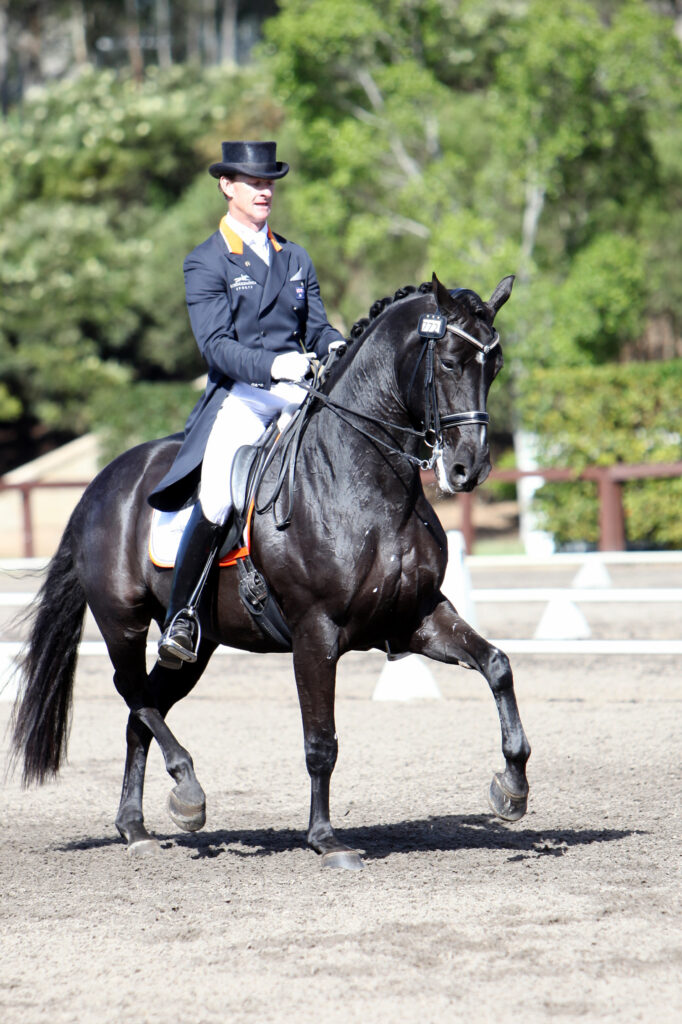
Balanced and clear transitions
All too often riders achieve a bold entry, only to ruin the impression by slamming on the brakes into halt. Now, I love my cowboy riding but a “big stop” is best reserved for the cutting or reining pen, not the dressage arena.
The keys to a balanced and clear transition are preparation, and well-trained reactions to clear aids. The preparation into the downward transition of halt is your half-halt(s), and in your training system you should have developed reliable responses to your half-halts. My half-halts start from my shoulders and incorporate my core, seat and a supporting leg, so be sure to train this at home as part of your normal daily program.
The upward transition to trot should also be trained at home. Be clear with your horse that when you put inward leg pressure at the girth (s)he should respond into trot. Again, be clear and reward when your horse offers the correct response.
Square, immobile and attentive halt
You wouldn’t expect to turn up at a competition and suddenly ask your horse for a perfect canter pirouette when you’d never trained it before, yet for some reason many of us (and yes, I’m guilty of this!) never train halts at home, but expect them to score well on show day.
The judges want to see the halt executed accurately at X. To achieve this, you can either look to your side to check when your body is lined up with E/B, or (and this would be preferable) you can use your peripheral vision to make that judgment. Either way, you need to practise!
Some horses do start to anticipate, and my tip to avoid this is to not always practise the movement as such, but the preparation for the movement. So, on the centreline you would practise the collection for the halt, but then move forward again. You could repeat this several times on the centreline, and only sometimes ask for the full halt.
A square halt always picks up good marks, and achieving this is a combination of riding in a well-balanced way (without more pressure on one leg than the other), plus training the square halt at home, using a gentle tap with the whip or a reminder with the leg to ask the offending hind leg to shift forward next to the other hind leg. Often if you’re halting in an active, collected pace, the halt will naturally be quite “under” the horse and square.
First impressions count, but so do final impressions. At the end of your test always reward your horse for the effort, and walk positively forward towards the C judge before exiting the arena, otherwise it looks like you can’t wait to be out of there!
Dressage is a performance and I think it creates a lovely impression (and leaves you in a good frame of mind), especially at the final centreline, to smile and enjoy the moment.
Learn more from Brett Parbery via Performance Riders.
This article was first published in the May/June 2019 issue of Equestrian Life.
